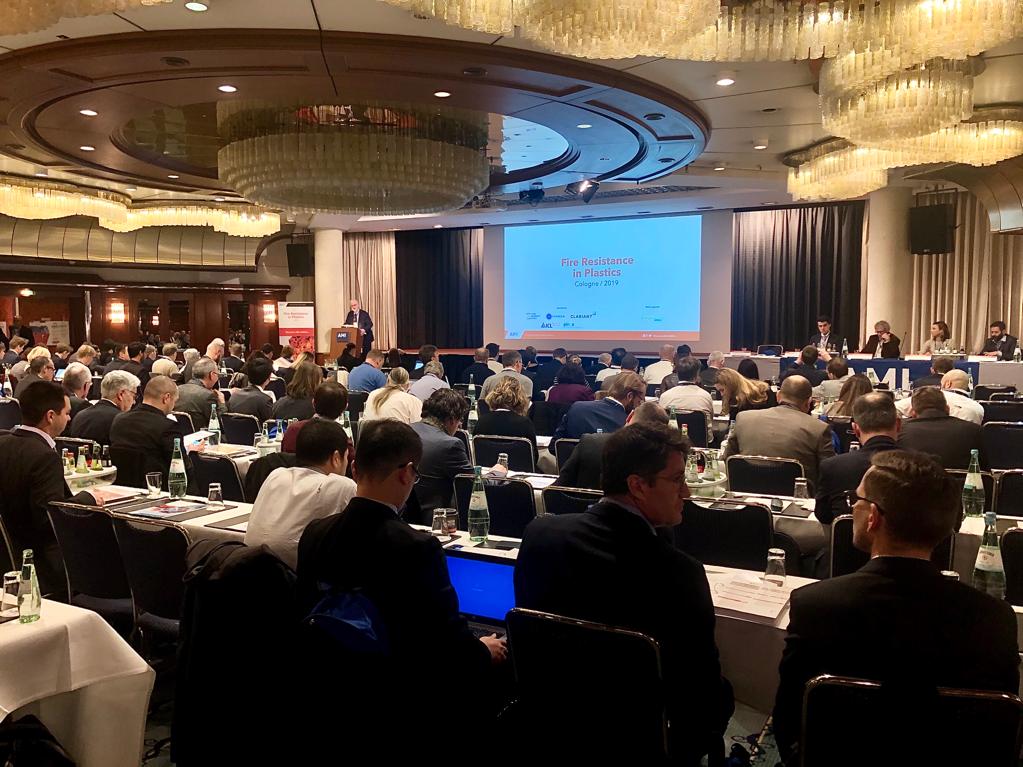
This year’s Flame Retardants in Plastics Conference included a panel discussion on recycling, moderated by Isabel de Castro, Flame Retardants Europe, with Chris Thornton of pinfa, Karen Janssens of Campine, Rudolf Pfaendner of Fraunhofer LBF and Lein Tange of ICL-IP.
Isabel de Castro, Flame Retardants Europe, introduced the panel discussion, indicating that EU policymakers are strongly pushing plastics recycling tend to be opposed to “energy valorisation” of end-of-life plastics, be it incineration or other routes such as cement industry or metal smelters. Therefore, it the FR industry needs to demonstrate that FRs are relevant for and can fit in the circular economy.
Rudolf Pfaendner, Fraunhofer LBF, summarised the conclusions of the pinfa tests of mechanical recycling of PIN FR plastics. These tests showed that for nearly all the polymer / PIN FR combinations tested, fire performance was maintained after multiple ageing – re-extrusion cycles, but mechanical properties tended to deteriorate because of damage to the polymer and the glass fibres, not because of the flame retardant (see pinfa Newsletter n°105).
Chris Thornton, pinfa, underlined the opportunities for new business models around plastics recycling, in developing compound formulations to use end-of-life plastics as input materials and new additives to improve compatibility between recycled polymers and traces of unintended contaminant polymers or additives resulting from sorting errors (see Compounding World “plastics upcycling” summarised in pinfa Newsletter n°108). He also emphasised that the obligation to recycled end-of-life plastics, sometimes after a decade or longer of produce use, obliges to develop and use FR chemicals which are recognised as safe (will not become the “legacy contaminants” of the future).
Active discussion between the panel and conference participants identified challenges in recycling technical plastics, which is more complex than packaging materials: longer use life (distance from producer to end-of-life, problem of “legacy” additives such as POP brominated flame retardants or heavy metal stabilisers), wider variety of polymers and additives, smaller quantities rendering logistics more costly.
Discussion points included:
- Tests show that most flame retardants are compatible with mechanical recycling, loss of mechanical properties is generally due to polymer and fibre deterioration not to additives.
- Today already nearly all plastics production scrap is already mechanically recycled. The challenge is sorting and recycling of post-consumer, end-of-life plastics.
- Need for stable and coherent regulatory framework, and in particular for adequate producer responsibility funding to cover the costs of End-of-Life collection, sorting and recycling.
- Regulation should also oblige “design for dismantling”, to facilitate separation of different types of plastics.
- Industry needs to work together, with regulators, to implement coherent, long-term and universal systems of labelling of different plastics (polymer, additives) to facilitate sorting (see the example of material classification for PET bottles).
- Business opportunities for additives, to improve the recycling compatibility of recovered materials and their processing, or tracers and sorting technologies.
- Cooperation across the industry value chain is essential to enable end-of-life collection, sorting, logistics and plastics recycling: polymers, additives, compounders, product design, retail, recyclers, regulators and funding.
- If industry fails to come together, to speak with one voice, and to find solutions, then there may be increasing pressure to “simplify” recycling by reducing the number of polymers and additives used.